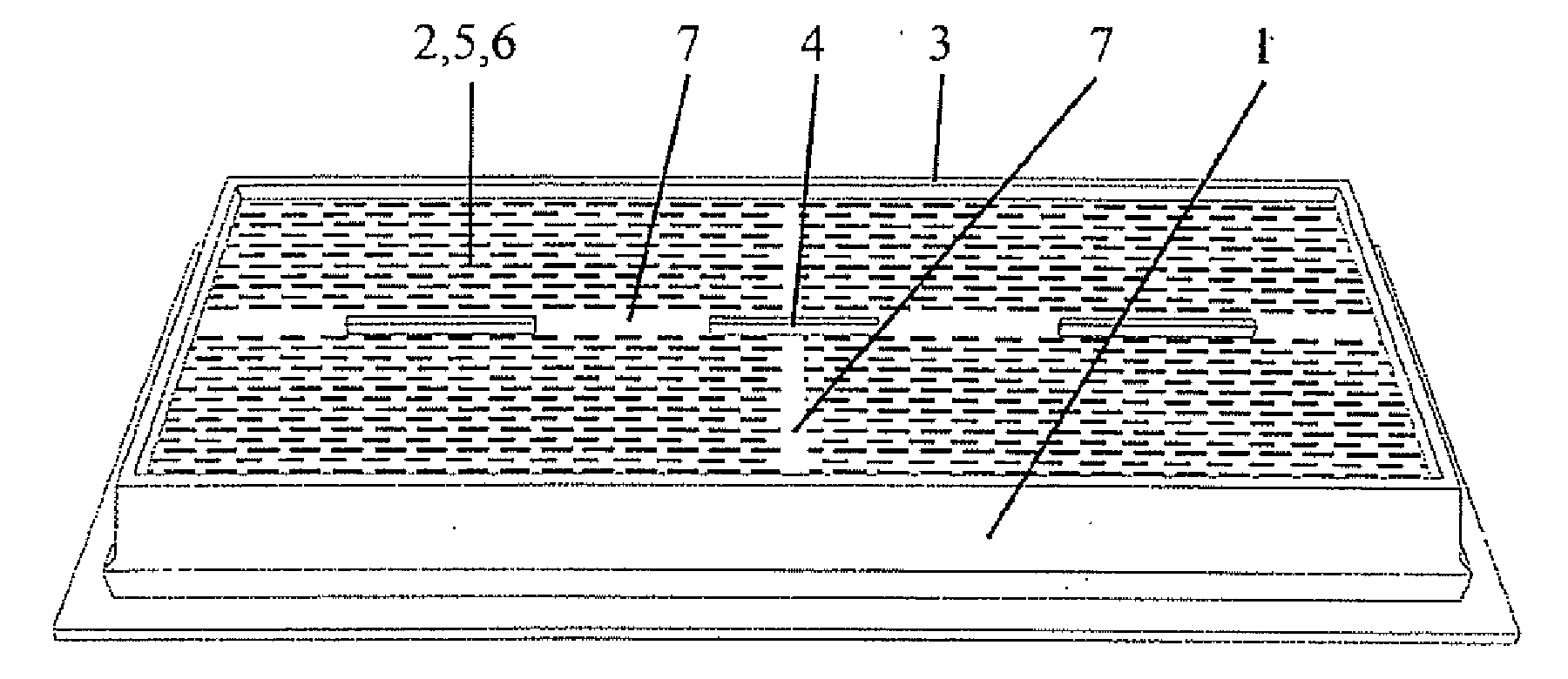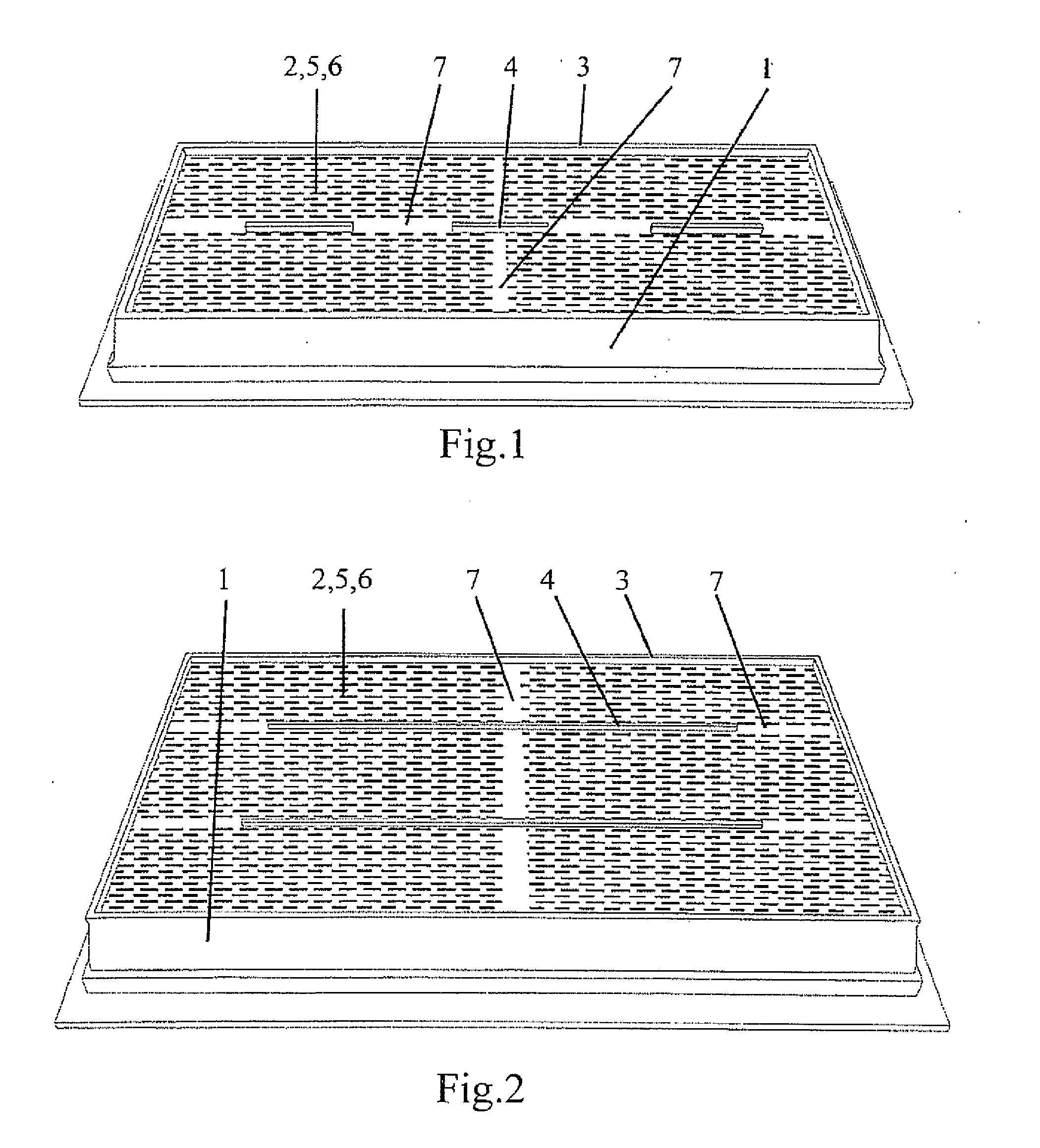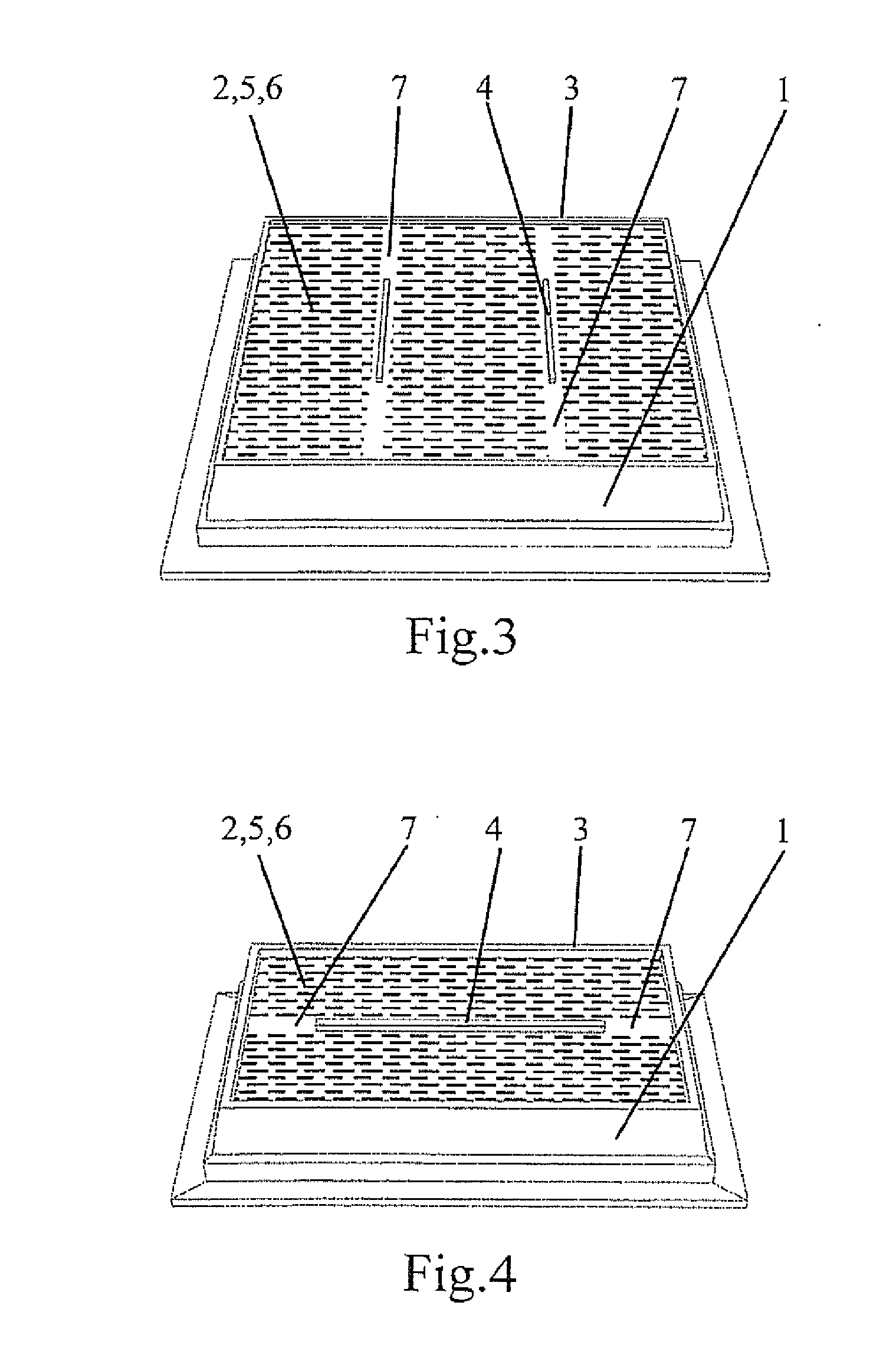Induction Cookware for Keeping Food Warm
a technology of induction cookware and food, which is applied in the field of induction cookware items, can solve the problems of electrical eddy currents, rather than being limited to fields, and achieve the effects of preventing the breaking or rupturing of induction cookware, reducing the risk of breaking or rupturing induction cookware, and high risk of stress cracking
- Summary
- Abstract
- Description
- Claims
- Application Information
AI Technical Summary
Benefits of technology
Problems solved by technology
Method used
Image
Examples
Embodiment Construction
[0024]FIGS. 1 to 4 show the claimed induction cookware 1 in the form of rectangular porcelain dishes which are provided for the purpose of receiving food and keeping it warm. A base 2 of the induction cookware 1 is surrounded by a circumferential rib 3. Furthermore, the base 2 comprises one or more ribs 4 within the rib 3 that surrounds the base 2. In the embodiments, these ribs 4 are arranged on imagined lines along and / or transverse to the base 2 of the induction cookware. As is seen in FIG. 1, the ribs 4 can be interrupted. The ribs 4 are distanced from the rib 3 that surrounds the base 2; specifically, they are arranged at a lateral distance from the surrounding rib 3 and end at a distance from the surrounding rib 3. The ribs 4 are thus distanced from the edge of the base 2 of the induction cookware 1.
[0025]The base 2 of the induction cookware 1 has a coating 5 of a ferromagnetic material on its underside within the surrounding rib 3. Hereafter, said ferromagnetic material will ...
PUM
 Login to View More
Login to View More Abstract
Description
Claims
Application Information
 Login to View More
Login to View More - R&D
- Intellectual Property
- Life Sciences
- Materials
- Tech Scout
- Unparalleled Data Quality
- Higher Quality Content
- 60% Fewer Hallucinations
Browse by: Latest US Patents, China's latest patents, Technical Efficacy Thesaurus, Application Domain, Technology Topic, Popular Technical Reports.
© 2025 PatSnap. All rights reserved.Legal|Privacy policy|Modern Slavery Act Transparency Statement|Sitemap|About US| Contact US: help@patsnap.com



